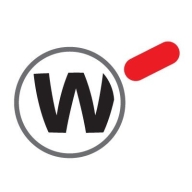

WatchGuard Gateway AntiVirus and Microsoft Defender for Endpoint are both contenders in the cybersecurity market. Despite WatchGuard’s competitive pricing and robust support, Microsoft Defender takes the lead with its rich features and seamless integration with Microsoft products.
Features: WatchGuard Gateway AntiVirus focuses on solid malware detection, real-time scanning, and strong integration capabilities for businesses prioritizing layered security. Microsoft Defender for Endpoint shines with advanced threat intelligence, automated investigation, and cross-platform security integration, providing an extensive feature set that ensures its competitive advantage.
Room for Improvement: WatchGuard could enhance its user interface and expand integration with third-party tools. Improvements in threat intelligence analytics and customization options are also areas to consider. Microsoft Defender could benefit from refining its support services, improving resource consumption efficiency, and enhancing detailed threat analytics for broader visibility.
Ease of Deployment and Customer Service: WatchGuard offers easy deployment with well-documented assistance, beneficial for businesses wanting minimal disruption. Microsoft Defender, with its seamless integration into the Microsoft ecosystem, offers easy adoption for organizations already utilizing other Microsoft services, aligning smoothly with existing systems.
Pricing and ROI: WatchGuard Gateway AntiVirus presents a value-centric pricing structure for budget-conscious organizations, focusing on a reasonable initial cost and ROI. Microsoft Defender, possibly requiring higher initial investment, leverages its extensive security capabilities to justify the cost, offering long-term value by including comprehensive security features as part of its offering.

Microsoft Defender for Endpoint is a comprehensive security solution that provides advanced threat protection for organizations. It offers real-time protection against various types of cyber threats, including malware, viruses, ransomware, and phishing attacks.
With its powerful machine-learning capabilities, it can detect and block sophisticated attacks before they can cause any harm. The solution also includes endpoint detection and response (EDR) capabilities, allowing organizations to quickly investigate and respond to security incidents. It provides detailed insights into the attack timeline, enabling security teams to understand the scope and impact of an incident.
Microsoft Defender for Endpoint also offers proactive threat hunting, allowing organizations to proactively search for and identify potential threats within their network. It integrates seamlessly with other Microsoft security solutions, such as Microsoft Defender XDR, to provide a unified and holistic security approach. With its centralized management console, organizations can easily deploy, configure, and monitor the security solution across their entire network.
Microsoft Defender for Endpoint is a robust and scalable security solution that helps organizations protect their endpoints and data from evolving cyber threats.
Keeping your network free of malware is more challenging than ever before as an increasing number of new and ever-changing threats are emerging each day. Ensure your network and devices remain free of malware with WatchGuard Gateway AntiVirus. It uses advanced, multi-layered threat detection engines to identify and block malware at the network gateway. Using industry-leading, high-performance scanning of traffic on all major protocols, WatchGuard Gateway AntiVirus provides real-time protection against known viruses, trojans, worms, spyware, and rogueware.
We monitor all Anti-Malware Tools reviews to prevent fraudulent reviews and keep review quality high. We do not post reviews by company employees or direct competitors. We validate each review for authenticity via cross-reference with LinkedIn, and personal follow-up with the reviewer when necessary.